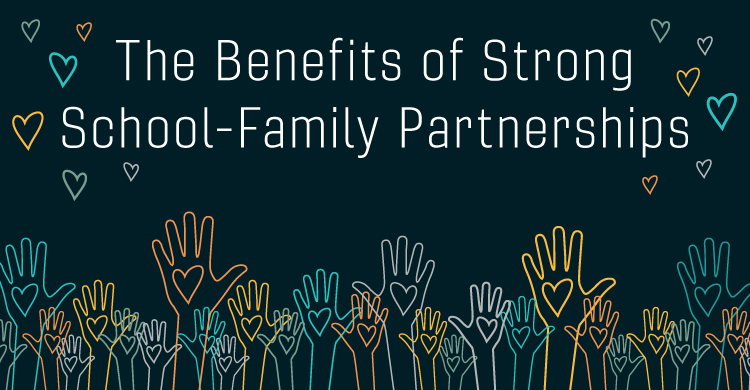Five years ago, after I was named Oklahoma’s Assistant Principal of the Year, I had been asked to present at graduate classes or workshops. I realized I had a learned a lot of valuable lessons to share from my years as a school administrator. I began to ask myself how I could find more opportunities to train, teach, or share with aspiring school leaders. One path for doing this would have been to pursue my doctoral studies in education. This may have helped establish my credibility as an expert in my field. Or maybe it would allow me to teach at the university level someday.
But I made a different decision. I decided to begin blogging instead. By sharing content online, I was able to catalog the lessons I was learning. I was sharing these ideas with school leaders while still practicing in my own school. As a result, I was able to self-publish my first book, start a podcast, and see my second book, Messaging Matters: How School Leaders Can Inspire Teachers, Motivate Students, and Reach Communities, published this summer by Solution Tree Press (Parker, 2017). All of this content creation has opened doors for me to speak to school leaders in schools across my state and across the country.
Here’s my point: I did not wait for someone’s permission to begin learning, growing, and sharing ideas I thought were important.
It’s easy to see how that mindset has affected my personal or professional growth, but why does this matter for your influence as a teacher or school leader? More specifically, how might this affect your own messaging to your students, teachers, and community?
As I visit with school leaders across my state and around the country, I hear many of them share their disappointment, anger, or disillusionment at the public’s perceptions of schools. We live in a time when public schools are under constant assault. Whether it is the portrayal of public schools as failing institutions or the lack of funding for schools, educators face challenges on two fronts: one, we must be creating the best environment for learning, and two, we must also be advocating for why our schools need support.
In light of these conversations about producing, designing, learning, and growing, here’s my question for you: Whose permission are you waiting for to take back the narrative about the importance of your schools?
4 Ways to Take Back the Conversation about Your School
We have never before lived in a time like this, when we have access to so many options for sharing, publishing, illustrating, and highlighting the good work happening in our schools. With that in mind, here are just four examples of ways you can be doing that right now.
-
Start a weekly school newsletter.
You may have a talented teachers or group of students who can help you collect great photos, images, or stories about learning, activities, or competitions happening throughout a week of school. Set a schedule for sharing this out. Whether you do this through Microsoft Publisher, a Word template, or by starting your own school blog, set a time each week to share a link with parents and your community members. I served as an assistant principal for nine years before becoming a principal. When I became principal, I made it a goal to share a summary of the week every Friday afternoon. For the next four years, it became the most consistent way of building positive momentum in communication with parents. Newsletters can be a great way for parents and community members to hear specific examples of positive learning happening in your school. Here’s a great example of a new school blog, The Claw, from Canton, Oklahoma principal Adam McPhail (McPhail, 2017).
-
Use social media to promote your school.
Whether it’s via Twitter, Instagram, or Facebook, choose a platform where you can post images, reminders, and updates for parents. Last year, my school even paid to boost Facebook posts we wanted to be shared outside our own community. When we did, that post reached over 60,000 readers. Our local TV news saw the story on Facebook and came to the school to do a positive story on our students. Aspasia Carlson from John Marshall High School in Oklahoma City is a great example of how to use Twitter to showcase her school. It’s no coincidence that she has amazing support from local foundations that enjoy supporting these great students she highlights every day (Carlson, 2017). (For another example of using social media to promote your school, see #LoveMySchoolDay. Social media can even be used to promote professional development in your school.)
-
Share stories with your local newspaper or other media sources.
Whether it is print media or television, media outlets are constantly looking for ways to engage an audience, increase traffic to their websites, and capture new subscribers. You can help them do this by sharing lots of great images and stories about students from your school. Don’t wait to be asked for a good story. Discover who are the best contacts for your local media outlets and begin emailing them the same updates you do your parents. They may not publish everything you send them, but when they do pick up on one of your stories, then the reach of your school has just expanded to all their members too. (Read about negative media coverage and why schools must work to promote the good news.)
-
Include students in your messaging.
In connection with all these steps, I also believe it is important that you learn to engage students in ways to broadcast about your school. Last year, we had student leaders who would create their own Twitter hashtags for events happening at the school, making videos to share in student assemblies, or broadcasting livestream from games or competitions.
Students are smart and creative. Use their talents to expand the ways your school is communicating. Another example came when I visited my state capitol to talk to legislators about the need to increase school funding. I didn’t travel alone; I took a small team of students with me. Lawmakers were happy to meet students and talk to them about the processes involved in government. Plus, we shared photos from the visit via social media, our newsletter, and with local media.
Let’s Wrap This Up
Educators do not need to wait for someone to discover a silver bullet for changing the narrative about our schools. We already have access to do that today. Imagine what happens if hundreds, thousands, or millions of educators unite around a commitment to talk about the great things happening in our schools. The momentum we can build could completely change the way people talk about schools.
Now It’s Your Turn
What ways can you embed practices in your schedule for sharing about your school’s successes? Think of one new action you take this school year to celebrate the good work happening in your school, and then find others who can help you reach that new goal.
Resources:
Carlson, A. (2017, October 10). Aspasia Carlson (@AspasiaCarlson). Retrieved October 10, 2017, from https://twitter.com/AspasiaCarlson
McPhail, A. (2017, October 10).The Claw. Retrieved October 10, 2017, from https://cantontiger.org/
Parker, W. D. (2017). Messaging matters: how school leaders can inspire teachers, motivate students, and reach communities. Bloomington, IN: Solution Tree Press.







